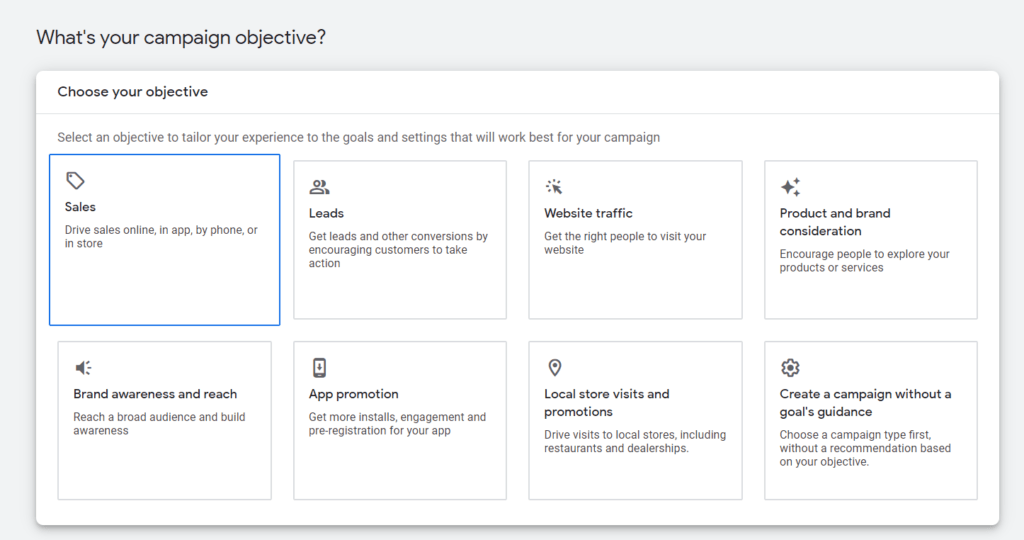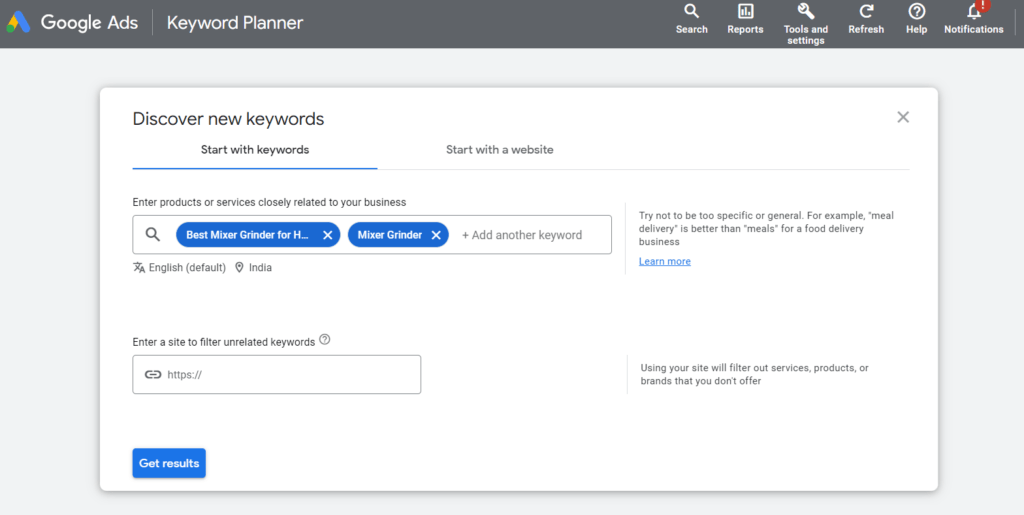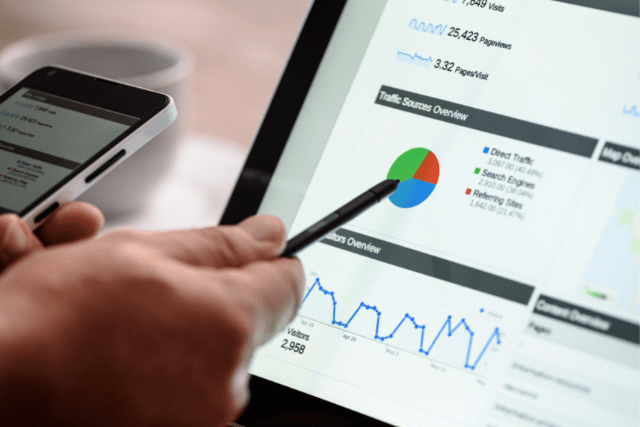Google has been creating and executing new advertising methods on a large scale for many years. Many of those methods have proven successful, but only one keeps steadily growing at an amazing rate. This method is called Google AdWords, the largest online ad service in the world by far! In this guide, we will go over the fundamentals of Google AdWords in detail.
First, we will go over what Google AdWords is, how it works, how you can use it for your business or product, and other useful tidbits about its inner workings. After that, we will look at tips and tricks you can use to improve your campaigns and get better results.
Table of Contents
What is Google AdWords?
Google AdWords is an online advertising service that allows businesses to display ads on Google and its partner websites. Advertisers can set a budget for their campaigns and choose what keywords they want their ads to show up for. When someone searches for one of those keywords, Google will show the advertiser’s ad next to the search results. When users click on the ad, they are taken to the advertiser’s website. The advertiser is then charged based on how much they bid on the keyword and how often their ad is clicked.
Google AdWords can be a powerful tool for businesses of all sizes, but it is particularly well-suited for small businesses that may not have the budget for traditional advertising. With AdWords, businesses only pay when someone clicks on their ad, so there is no wasted spend. And because businesses can choose what keywords they want their ads to appear for, they have a lot of control over who sees their ad and what kind of response they get. If you’re thinking about using Google AdWords for your business, talk to a professional about setting up your campaign and managing your budget. They can help you get started and ensure that you’re getting the most out of your investment.
Why use Google AdWords for online selling
As an online store owner, you always look for new ways to reach potential customers. Search engine marketing can be a great way to connect with shoppers who are already interested in what you have to offer. Google AdWords is a tool that allows you to create ads that will appear when people search for certain keywords related to your products or services.
When done correctly, AdWords can drive traffic to your website and generate sales. AdWords can also be changed to reach specific groups of people, which makes it a very effective way to reach potential customers. With its ability to reach a large audience and target specific groups, AdWords can be a valuable asset for any online business.
Setting up your first campaign of Google AdWords for online selling
Before you create your first Google AdWords campaign, there are a few things you need to take into consideration.

Choose your objective
The first step in setting up your Google AdWords campaign is to choose your objective. What do you want your campaign to accomplish? Are you looking to generate leads, increase sales, or promote a new product? Once you have decided on your objective, you can move on to the next step.
Select your target audience
The next step is to select your target audience. Who do you want to reach with your campaign? You can target people based on location, age, gender, interests, and more. The more specific you are with your target audience, the more likely you are to reach people interested in what you offer.
Set your budget
After you have chosen your objective and target audience, the next step is to set your budget. How much money do you want to spend on your campaign? You can set a daily or total budget for the entire campaign. Remember that you will need to pay for each click on your ad, so be sure to set a budget that you are comfortable with.
Choose your keywords
Choosing the right keywords is one of the most important aspects of any AdWords campaign. Keywords are the words or phrases people will use when searching for something on Google. Choosing keywords that are relevant to your business and have a high search volume is important. However, you also want to avoid too competitive keywords, as this can make it difficult for your ad to be seen by potential customers.

Create separate campaigns for each goal
Once you have a list of keywords, you need to start creating your campaigns. It’s important to create separate campaigns for each of your goals. That way, you can design each campaign specifically for that goal. For example, if you’re trying to increase brand awareness, you would want to create a different campaign than if you were trying to generate leads.
Write your ad copy
Your ads need to be well-written and persuasive in order to be effective. You need to make sure that your ads are relevant to the keywords that they’re targeting and that they include a call-to-action (CTA). Your ads should also be clear and concise—people should be able to understand what you’re offering and why they should care without having to read a lot of text.
Your ads should also include attractive visuals, such as images or videos. People are more likely to pay attention to an ad if it includes an image or video than if it’s just text. The visuals should be relevant to the product or service that you’re promoting and they should be high quality— blurry or low-resolution images will not make a good impression on potential customers.
Target specific locations
If you’re only selling products or services in certain locations, then you need to make sure that your ads are only being shown in those locations. There’s no point in paying for ads that people in other parts of the world will see—you want potential customers who are actually able to buy from you! You can target specific locations by country, state/province, or even city level.
Choose your bid amount.
The next step is to choose how much you want to bid for each click on your ad. The amount you bid will determine how often your ad appears on Google search results pages. You can choose to bid manually or let AdWords automatically set bids for you based on what it thinks is necessary to reach your objectives.
Set up tracking
Tracking is an important part of any AdWords campaign so that you can see how well it performs. There are several different metrics that you can track, such as clicks, impressions, conversion rate, and more. By tracking these metrics, you can see which aspects of your campaign are working well and which need improvement.
Measuring the success of your campaign
Finally, you need to measure the success of your campaign. There are several different metrics that you can track. By tracking these metrics over time, you can see which aspects of your campaign are working well and which need improvement. Additionally, it’s important to look at your AdWords campaign’s overall ROI (return on investment)—this will help you determine whether or not it is worth continuing with the campaign in the long run.
Cost Per Conversion / Acquisition (CPC / CPA)
One of the most important metrics you can track is your cost per conversion or acquisition. This metric tells you how much money it costs to generate a single sale, lead, or other desired action. If this number is too high, your AdWords campaign may not be worth continuing in the long run. However, if it’s low enough, it may be worth increasing your investment to generate even more conversions and grow your business!
Conversion Rate.
The conversion rate indicates the percentage of people who click on your ad and go on to make a purchase or take some other desired action. Tracking this metric over time will allow you to see whether your AdWords campaign successfully generates conversions. Hours / Days Spent Budgeting. This will tell you how much time and effort you need to put into managing your AdWords campaigns and how much money you spend each day or week on advertising costs.
Clickthrough Rate (CTR)
The clickthrough rate (CTR) is an important metric to track to measure the success of your AdWords campaign. The CTR is simply the percentage of people who click on your ad and go on to complete the desired action, such as making a purchase or signing up for a newsletter. By keeping an eye on this metric over time, you can see if your ads are good at attracting and keeping the attention of potential customers. This will help you decide if your ad campaign should be kept going or needs to be changed to improve it. Tracking this metric can also help you determine if your ads have any problems that might cost you clicks and lower your ROI.
Cost per Click (CPC)
Another important metric for AdWords is the cost per click (CPC). This metric tells you how much you’re paying for each ad click, which can be a useful indicator of your overall ad performance. If this number is too high, it may not be worth continuing with the campaign. However, if it’s low enough and your conversion rate is high, it might be worthwhile to continue with your current ads or increase your investment to see if you can drive more conversions over time.
Quality Score.
The quality score is an important metric for your AdWords campaign, as it measures how well your ads perform. This number is calculated based on various factors, such as the clickthrough rate and relevance of your ad text and keywords. Tracking this metric over time can help you determine if any specific aspects of your campaign need to be improved to improve its performance. Additionally, the higher your quality score is, the lower your costs per conversion will likely be – optimizing this number could potentially increase the ROI of your entire AdWords campaign.
Impression Share.
If you want your ads to be shown as much as possible, then tracking your impression share is important. This metric measures the percentage of times your ads were seen compared to how many times they could have been shown based on budget and other factors. Tracking this metric over time will help you understand if there are any bottlenecks or issues that are affecting your ad showing potential, which can be key to ensuring optimal ROI from AdWords.
Overall ROI (return on investment)
The overall ROI, or return on investment, is another important metric to track for your AdWords campaign. This number indicates the amount of money you’re making in sales and other desired actions compared to how much you’re spending on your advertising costs. By tracking this metric over time, you can see if any changes need to be made to improve your ROI and grow your business. Additionally, keeping track of this metric can help you identify areas where your ad spends, may not be worth it based on the value it generates for your business.
Return on Advertising Spend (ROAS)
An important metric to track alongside your ROI is your return on advertising spend, or ROAS. This number tells you how much revenue is generated for every dollar spent on advertising, giving you a more specific measure of the effectiveness of your AdWords campaigns. By tracking this metric over time and comparing it to your overall ROI, you can determine if any changes need to be made to improve your return on investment and grow your business. Keeping track of these two metrics together can help you identify areas where additional ad spending may not significantly impact sales and other desired outcomes.
Other relevant metrics, such as bounce rate and time on site
By analyzing these data points together, you can get a more holistic view of how well your AdWords is performing and identify areas for improvement over time.
Tips and tricks for improving your results with AdWords
Here are a few tips and tricks for optimizing your AdWords campaign to get the best results:
1. Focus on your target audience.
When making and running an AdWords campaign, it’s important to know who your target audience is. This will help you ensure that your ads are relevant and interesting to the people most likely to be interested in your offer. For example, if you want to reach customers in a certain area, you might want to use keywords related to that area or include information about local sales or events in your ad copy.
2. Leverage visual elements such as images, videos, and infographics.
Visual elements can significantly improve the impact of your ads by helping them stand out from the crowd and capture your audience’s attention. Consider using high-quality images, eye-catching video ads, or engaging infographics to make your ads more engaging and compelling.
3. Measure the results of your AdWords campaign over time.
It’s important to keep an eye on key metrics like clickthrough rate, conversion rate, cost per click, return on ad spend (ROAS), and return on ad spend (ROI), so you can see how well your ads are doing and find ways to improve them. For example, notice a significant drop in conversion rate or cost per click over time. It may be worth experimenting with different keywords or ad copy to improve performance.
Whether you’re just starting with Google AdWords or have been using it for years, creating effective ads is essential to succeed.







